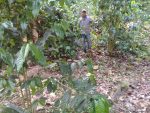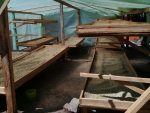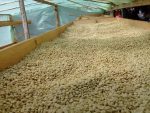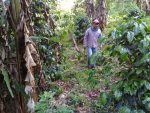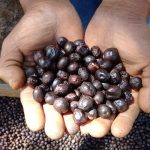87.32
A. History of the farm:
The producer has 3 years as owner of the farm, being an inheritance granted by his parents, having 3 hectares cultivated with coffee of the typical and Bourbon variety.
The topography is median equivalent to 30% slope.
B. The type of crop
It is cultivated under shade, with species of trees of the Ingas species (cajenicuiles), palo rey (Olmo Mexicano), aguacatillo (Zuelania guidonia), cajel, nanchillo, banana.
The fauna is endemic to the region: deer, badgers, wild pig, squirrels; diversity of birds, etc.
C. Good Agricultural Practices
Weed control is carried out twice a year; the regulation of shade and sanitary pruning is carried out after harvest, eliminating branches of the coffee tree damaged by mishandling or by pests or diseases; In addition, deep pruning or plant recipes are performed, generating new vegetative material.
The coffee drill is controlled by placing 16 traps / ha., As an attractant, the two types of alcohols are mixed, such as ethanol and ethyl; and for the control of rust, copper-based products are applied in preventive order and in lower use the High 100, this was applied in September 2018, so there is no residuality.
The daily payment is $ 200.00 / daily; using 12 day laborers every time weed control is done, doing it twice a year.
D. Good Process Practices
Washed coffee
It begins with the selective cutting of the cherry (two cuts in the harvest cycle), transporting it from the farm to the community in mule beasts.
Immediately the grain is passed through the siphon, eliminating floating grains, damaged by pests or diseases, using only mature and healthy grains.
Pulping is carried out in a manual pulping machine of a disk, using wooden tanks to carry out the fermentation of the parchment, usually the fermentation takes place in 12 hours (depending on the weather); after that, the washing is carried out (removal of the mucilage), and then it is left at rest (9 hours), dried in ecological beds inside the solar dryer, thereby avoiding contamination, maintaining the health of the product
The drying stage is carried out through constant movements of the parchment, minimally every half hour during the hottest hours of the day.
Coffee rises when it reaches 11.5 to 12% humidity
Parchment coffee packaging is done in plastic bags inside jute sacks, placed on wooden pallets in the region, in a place next to the house.
The labor used in the harvest stage is foreign, brought from the Mountain region (8 workers), the contracted time is 2 weeks.
| Rank | 22 |
|---|---|
| Farm Name | El Cajel |
| Farmer/Rep. | Roberto Hernández García |
| Altitude | 1320 meters |
| Country | Mexico |
| Year | 2019 |
| Size (30kg boxes) | 15 |
| City | El Edén, Atoyac de Álvarez |
| Region | Guerrero |
| Program | Mexico 2019 |
| Aroma/Flavor | roasted hazelnut, walnut, peach, cinnamon, spiced, cocoa, brown sugar, raspberry, buttery, |
| Acidity | mouthwatering, smooth, citric, |
| Other | creamy and silky body, jasmine, floral, lemon tea, tea-like finish |
| Variety | Bourbón |
| Coffee Growing Area | 3 hectars |
| Farm Size | 3 hectars |
| Auction Lot Size (lbs.) | 992.07 |
| Auction Lot Size (kg) | 450 |
| Business Phone Number | Telephone:+52 0 12001230007 | WhatsApp: +521 7421023553 |
| Business Address | [email protected] |





